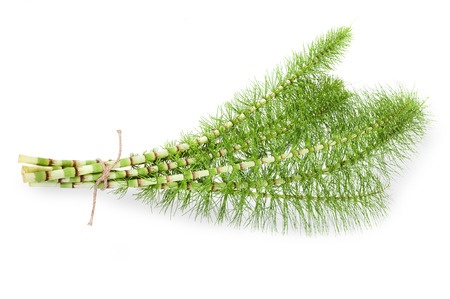
Horsetail (Equisetum arvense) might be a real problem weed for the gardener and their roots go down to Hades but extracts of this plant make a wonderful skin restorative.
Common name: Ackerschachtelhalm, Zimmkraut, Scheuergras (German), scouring rush (English) prele des champs (French).
The botanical name is derived from latin. Equisetum is a name based on equus, a second declension noun meaning horse whilst saeta refers to horse bristles. The stalks are lierally as tough as horse’s bristles. These tough, knobbly stalks were used ages ago to scrub pots and pans (think of our previous post about Le Creuset).
In Asia the stalks are cooked to a point where they are seen as crispier alternatives to bamboo in rice dishes.
The toughness is due to its high silica content. Because of this, the horsetail is ideal for skin and cosmetic use. Silica boosts collagen fibers in skin and thus invigorates both the connective tissue and the growth of nails. Silica is also an astringent where it has the effect of tightening and narrowing the pores. So, creams containing horsetail extract are used only to tighten the face, neck and chest area. It also prevents the formation of cellulite and prevents to some extent impure skin.
In many cases, horsetail has a general protective benefit. The extracts are full of antioxidants and anti-inflammatory compounds. These have a positive impact on the cellular resistance to oxidative stress. The flavonoids in the extract are mainly kaempferol, quercetin and protogenkwanin glycosides which are the primary active ingredients. Owing to its properties, the use of horsetail has a positive effect on skin damaged by pollutants.

Leave a Reply